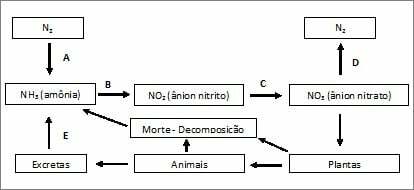O Himalayan pink salt, which has been gaining more and more followers, originates from the fossilized sea for thousands of years in the region of the Himalayas.

Himalayan mountain range, region where pink salt is extracted
One of the reasons for the increase in consumption and the dissemination of Himalayan pink salt is the possibility of acting as a substitute for table salt, or sodium chloride iodized.

Sodium chloride is widely used in several places on the planet
Sodium has been treated as a health villain, since its excessive consumption can cause several ailments, such as:
Increase of blood pressure;
Increased incidence of cardiovascular disease;
Increased retention of body fluids;
Overload in the functioning of the kidneys.
However, it is noteworthy that the aforementioned evils occur as a result of the excessive use of sodium chloride. After all, the compost is present in the vast majority of fruits, vegetables and foliage, that is, it is common in nature.
⇒ Benefits of sodium for human health
O sodium it is important for human health because it performs important bodily functions, such as promoting the water balance between cells and body fluids and participating in nerve impulses, Muscular contraction and transport of molecules between cells.
Thus, we cannot simply treat as a villain a substance that is so important to human beings.
⇒ Chemical composition of pink Himalayan salt
It is a salt that has many different compounds. Some studies even describe more than 80 mineral substances. Between them:
Phosphor
Bromine
Boron
Zinc
calcium sulfate
magnesium sulfate
Potassium Sulfate
Sodium Chloride
Also found in the pink salt of the Himalayas, the iron oxide and manganese are the substances responsible for the pinkish color of the salt.
⇒ Differences between pink Himalayan salt and common table salt
Sodium chloride:
Obtained from seawater evaporation or in salt mines;
Extraction is not completely free of contaminants;
It undergoes processing to remove impurities;
Lose minerals during processing;
Iodine is added to sodium chloride, an important substance for the proper functioning of the thyroid gland.
Himalayan pink salt:
Removed from millenary reserves, free of contaminants;
High degree of purity;
More than 80 mineral components in its composition;
Low sodium concentration (1 g of salt has 230 mg of sodium);
- Composed of very important minerals for the body, such as magnesium and potassium.
⇒ Advantages of Himalayan Salt
There are still no conclusive scientific studies on the real benefits of consuming Himalayan pink salt. However, preliminary studies point out among the results:
Aid in regulating the skin's moisture level;
Skin and body remineralization;
Assistance in the treatment of psoriasis;
Use as a natural skin exfoliant;
Helps to extract toxins;
Increased blood circulation;
Aid in the muscle relaxation process;
Aid in the stabilization of pH and oxidative stress in the human body;
- Increased body hydration.
By Me. Diogo Lopes Dias
Source: Brazil School - https://brasilescola.uol.com.br/quimica/sal-rosa-himalaia.htm

